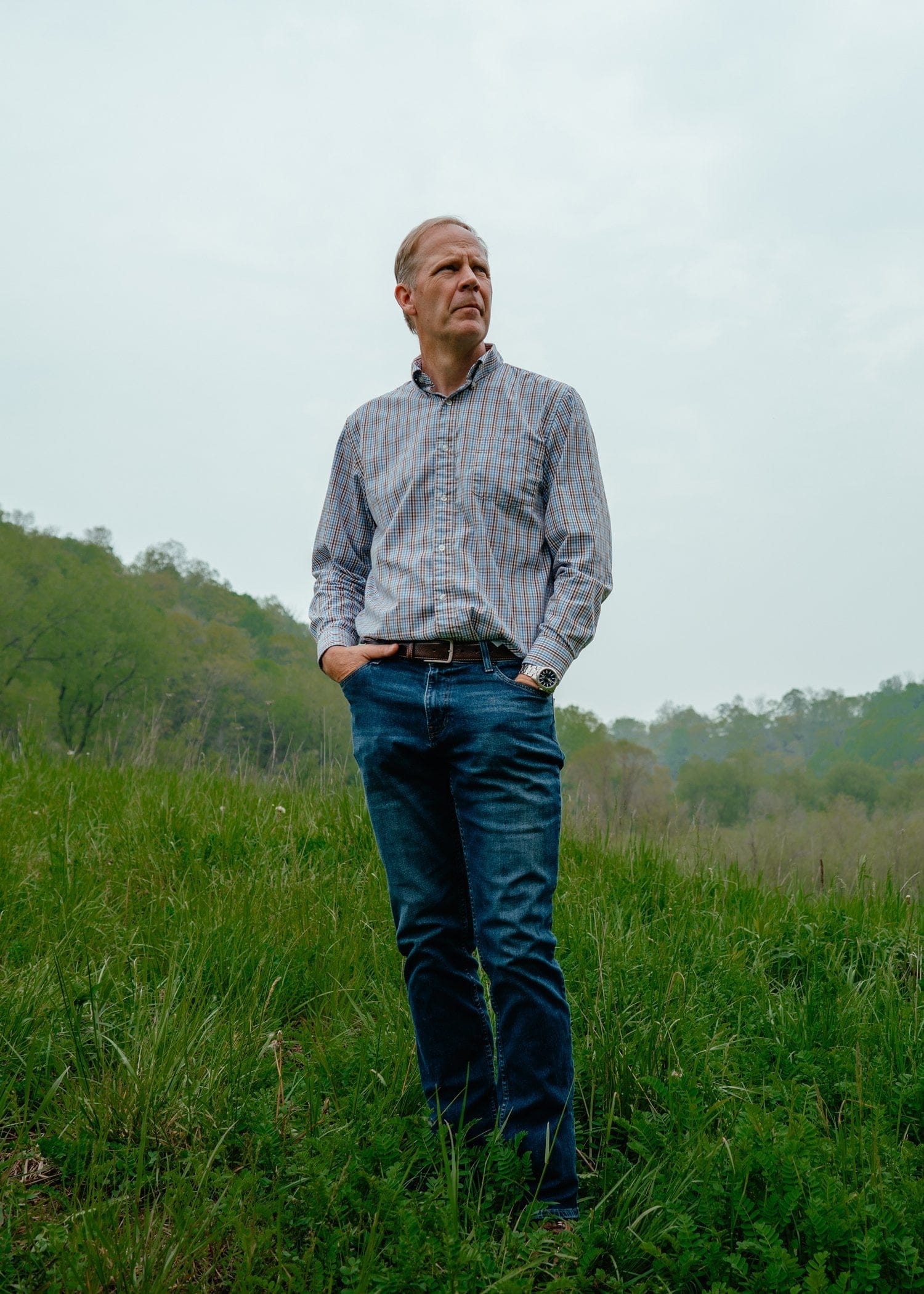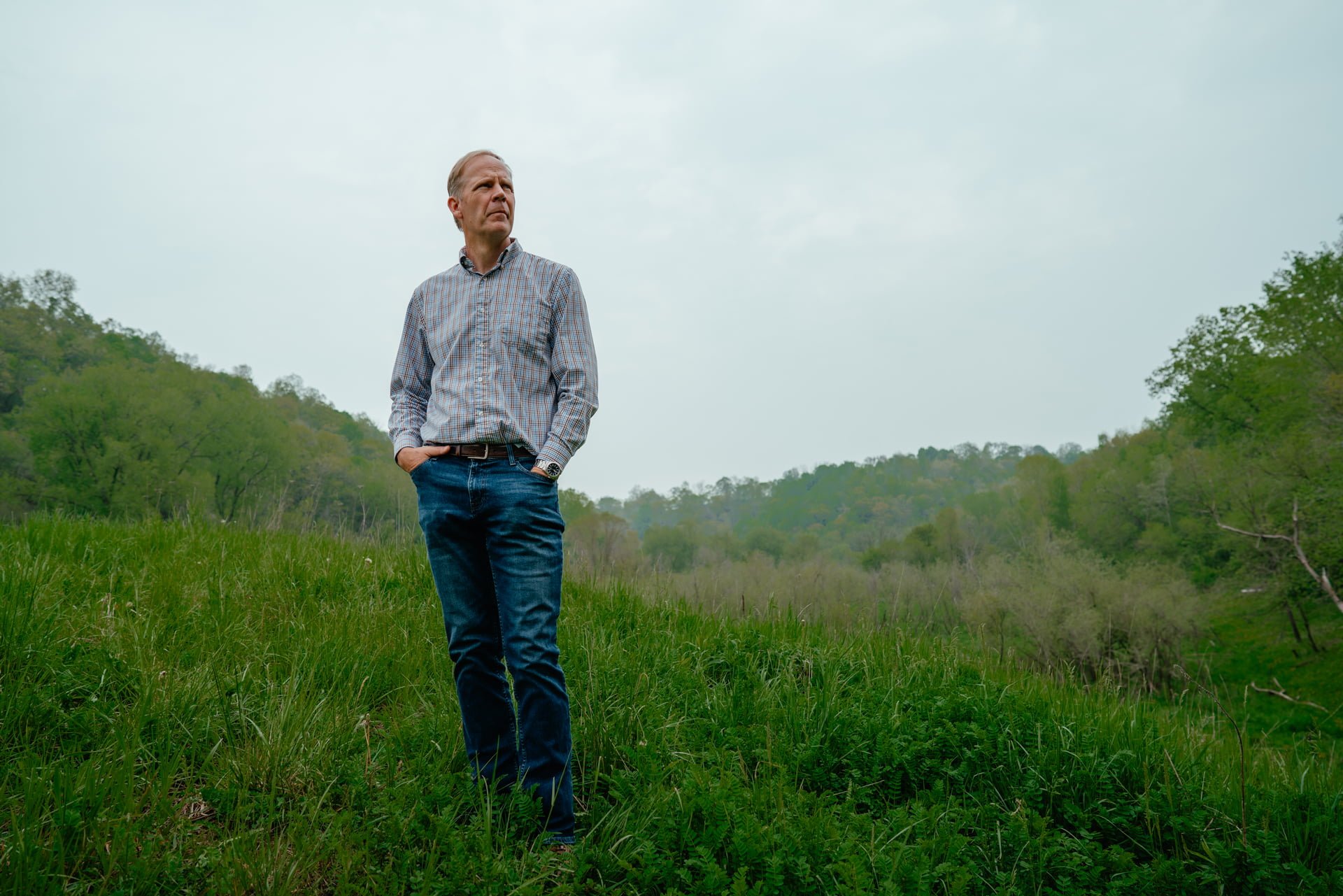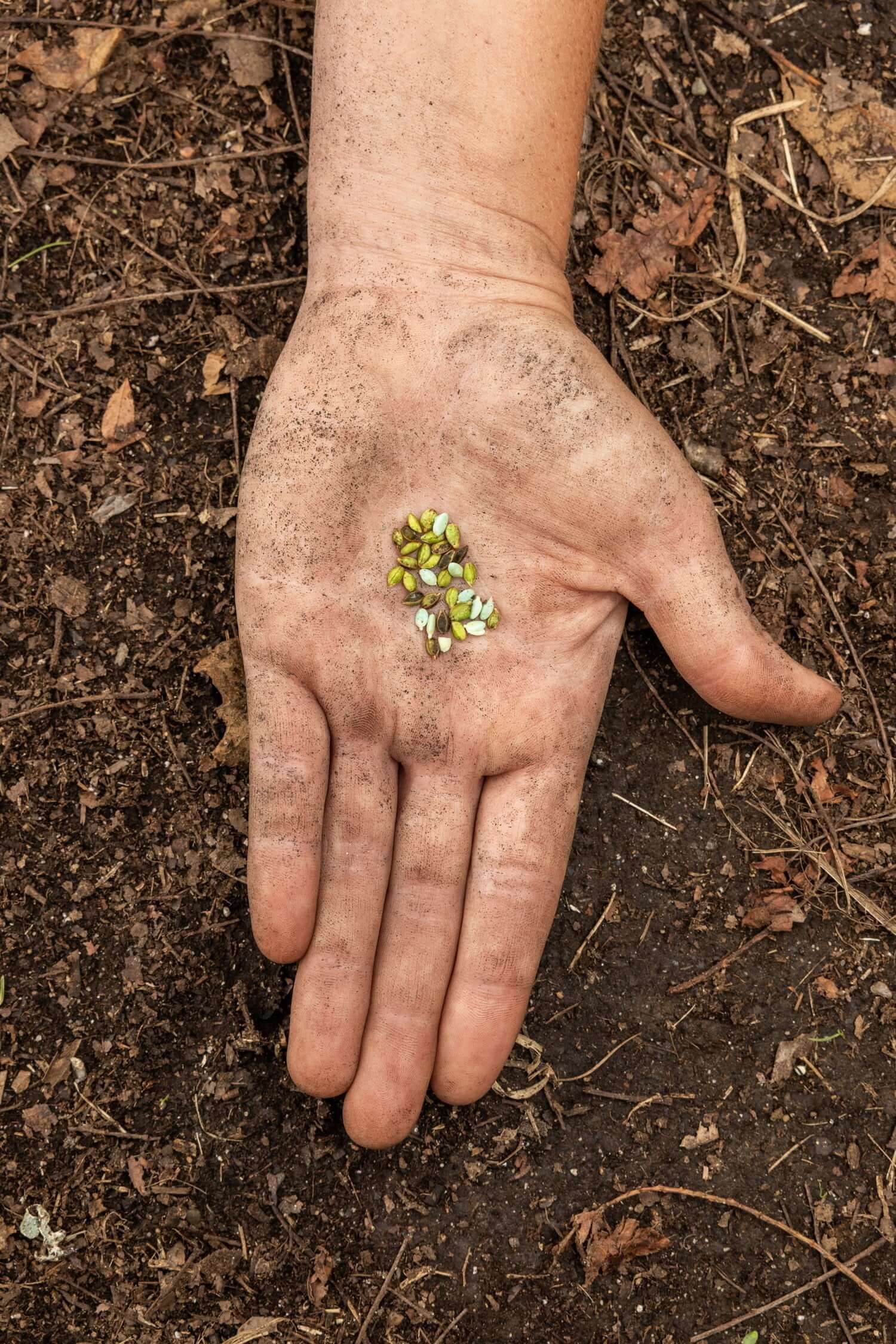In a flood-hit corner of rural Wisconsin, locals are tackling the impacts of climate change head-on. For the people leading that effort, the first step is building trust.
As a deluge struck western Wisconsin on the night of August 27, 2018, Bob Micheel worried.
Micheel has worked for Monroe County on land conservation since shortly after graduating in 1989. He had heard reports of intense rainfall on the opposite side of the county, and having seen dramatic flooding in 2007 and 2017, he knew the risk of a repeat was significant. The night was an anxious one. A red, flashing voicemail light awaited him when he arrived at work the next morning.
“Dam’s gone.”
Click.
Micheel recognized the voice. It belonged to a young farmer, Tucker Gretebeck, whose family’s farm lay near an area that received nearly 13 inches (approximately 330 mm) of rain over a 24-hour period. An earthen dam blocking a stream running through the Gretebecks’ land had been breached. The surging water littered boulders, sand and other debris over the farm’s dairy pasture. Four other flood control structures in the area also failed that night. Roads buckled, bridges washed away, and culverts failed. One analysis calculated the storm’s scale as the type of event that theoretically should occur only once every 500 or 1000 years.

A year later, in July 2019, another torrential rainfall swept away a steel-bar reinforced concrete stream passage on a different local farm. Impacts like these had driven up the cost of flood-related repairs from $33,000 during the entire decade of the 1990s to 1000 times that figure between 2010 and 2019. What are we going to do now? Micheel recalls the farmer asking him. “Not this,” was his reply.
Micheel realized that the climate coping strategies the county had used were no longer working. The increasing rainfall intensity wasn’t something the county could “design our way out of,” Micheel told Imagine5. But “we can help keep people out of harm’s way”.


Bob Micheel in his office in Sparta, Wisconsin. 2018 was a turning point in his work.
Building bridges
Monroe County is the headwaters for four rivers, “like a wheel with spokes going out”, as Micheel puts it. Micheel’s allies describe soil conservation as a question of “making running water walk”. Steep wooded hillsides swoop into narrow valleys while farms cling to sharp grades. When it rains, those inclines send water rushing downward, dragging along anything that will move. As a result, flood prevention looks like planting crops along the contours of the hillsides and building “water drops,” a concrete wall and floor carved into a downslope that can slow the water’s pace as it moves downhill. Managing how water flows is ever more important as climate change brings more extreme weather.
But in a rural corner of a ‘purple’ state like Wisconsin, where federal elections are decided by slim margins, tackling climate change means bridging divides. An August report from the Pew Research Center found that while a majority of Americans see climate change as an important issue, the partisan divide between Republicans and Democrats on the issue has grown. The notion that the climate agenda is exaggerated or even invented, is a common talking point among Republican politicians (Donald Trump has been calling renewable energy a “scam” at recent rallies).
Last year hard-right Republican Derrick Van Orden replaced a Democrat who had represented this part of Wisconsin in Congress for two decades. But when it comes to the concerns of family farmers and rural communities like Monroe County, it’s not clear either party has the answers: Wisconsin has led the nation recently in farm foreclosures.
“Most things I initiate here are because state and federal are dropping the ball, so if you want to make change, that’s from the ground up,” Micheel said of his work. And decades going round visiting landowners to slow erosion around their streams, has made him a go-to-guy, including among the Amish. These roots have bolstered the power of Micheel’s voice in the region, and his consensus-building approach has made it resonate.

When he saw that it was time to tackle climate change head-on, Micheel reached out to the county administrator. Together they came up with a plan for a climate change task force, which they presented to the country board. “We had reservations that some of [the county board members] were going to put roadblocks,” Micheel recalls, knowing that some of the members “are skeptics by nature”. “There’s always going to be folks who challenge things regardless. I figured there would be two, three, four who would not see it or who would buck the system because it’s climate change,” Micheel said. But “when everybody’s standing in water because of flooding, it’s an easier sell”.
During a board meeting following the July flash flood, area residents testified about their experiences. Sheds swept away. Basements flooded. The board voted unanimously to approve a resolution acknowledging that climate change is happening in Monroe County. The initial task force created to find pro-active solutions to the crisis included farmers, business owners and elected officials as well as representatives from the local army base.
And Micheel found his misgivings about pushback to be unfounded. “It was actually the complete opposite,” he said. “[Board members] were giving me ideas while I was at the podium, of what else we could do in this county to be more resilient, which was, holy cow.”
Tucker Gretebeck, the farmer who called about the dam breach, recalled firebrands at the task force’s early meetings.

“Every time Bob brought someone in, there were people who would come to put a different narrative in front of the group by asking questions,” Gretebeck recalled. Those questions, he said, were largely based on misinformation. But he believes they were also an opportunity to learn. “They made everybody think more,” he says. But partisan tensions have eased, according to Micheel.
“When people see others trying to do good, they want to help”
The task force prioritized goals like creating a rainfall and flood-stage monitoring system. Now, the county has monitors embedded in streams. That data goes to the National Weather Service, which disseminates it through text messages and a website. The group has also used summer interns to catalogue and assess the conditions of each stream crossing, culvert and bridge in the county.
After the 2018 flood covered Gretebecks’ dairy pasture with debris, making it unusable, the task force helped the family obtain funding so they could participate in a project to create a silvopasture, a grazing area with shade to offer animals a respite on hot days. The initiative planted 1,200 trees like walnuts and honey locusts, which provide dappled coverage. “Shade is so important for the cows’ comfort,” Gretebeck said. “If we have more shade, they’re going to be able to eat for another hour. The more eating they do, it puts more milk in the tank, which buys shoes for my kids.”
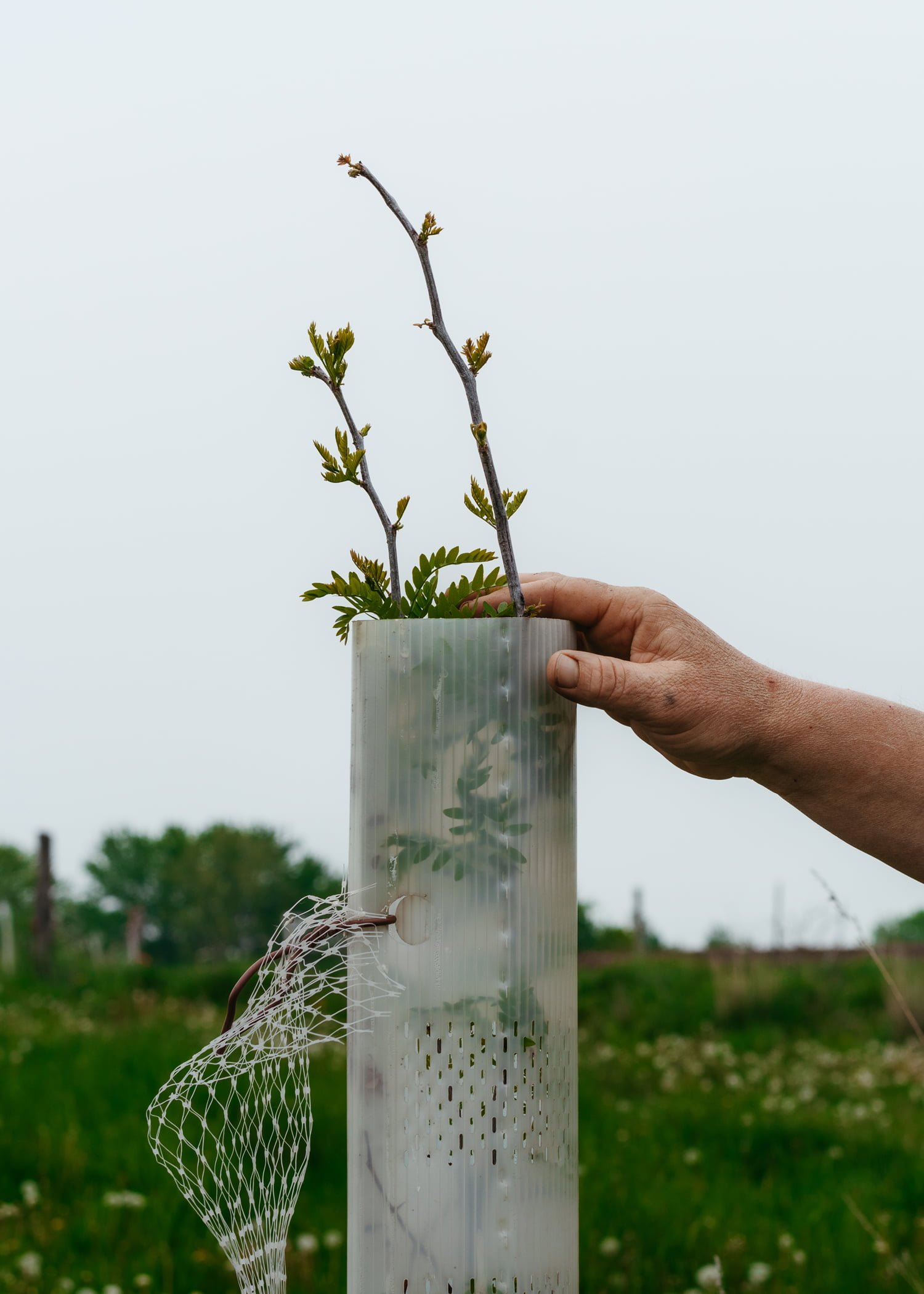
Tree seedlings in white tubes line Tucker Gretebeck’s dairy farm. After the flood, Gretebeck planted 1,200 trees in two days to help sequester carbon and provide shade for livestock.
Gretebeck has become active with a community group focused on conserving the local watershed. The local farmers, business people and residents who make up the group bond before meals by sharing a meal. Recently, Gretebeck lost a “pickle-off” to the leader of the group, Nancy Wedwick.
“We welcome everybody,” she says. “I think that when people see other people… trying to do something good, people want to help.” The watershed group invented Cover Crop Bingo, where people are encouraged to spot where farms have planted different cover crops that prevent erosion – competing for prizes donated by local businesses.
“You can’t be a leader if you don’t have any followers”
Jack Herricks, climate change task force member
Still, not everyone will be convinced that farming needs to change, says Jack Herricks, a member of the task force who is also an elected official and a long-time dairy farmer on the land his grandparents purchased in 1912. He has been practicing a no-till approach to planting since the 1980s, because he saw the amount of soil his farm was losing to erosion due to plowing. “On some farms [no-till is] real common. And other farms, they think of how stupid I am,” Herricks said. He likens this outlook to a matter of religious faith.
“I was born a Catholic and raised a Catholic and practice that faith. You’d probably have a hard time if you were going to come and try to convince me to be Buddhist or whatever, and it’s the same. I use that example because it’s like they just won’t even listen to it,” Herricks said.
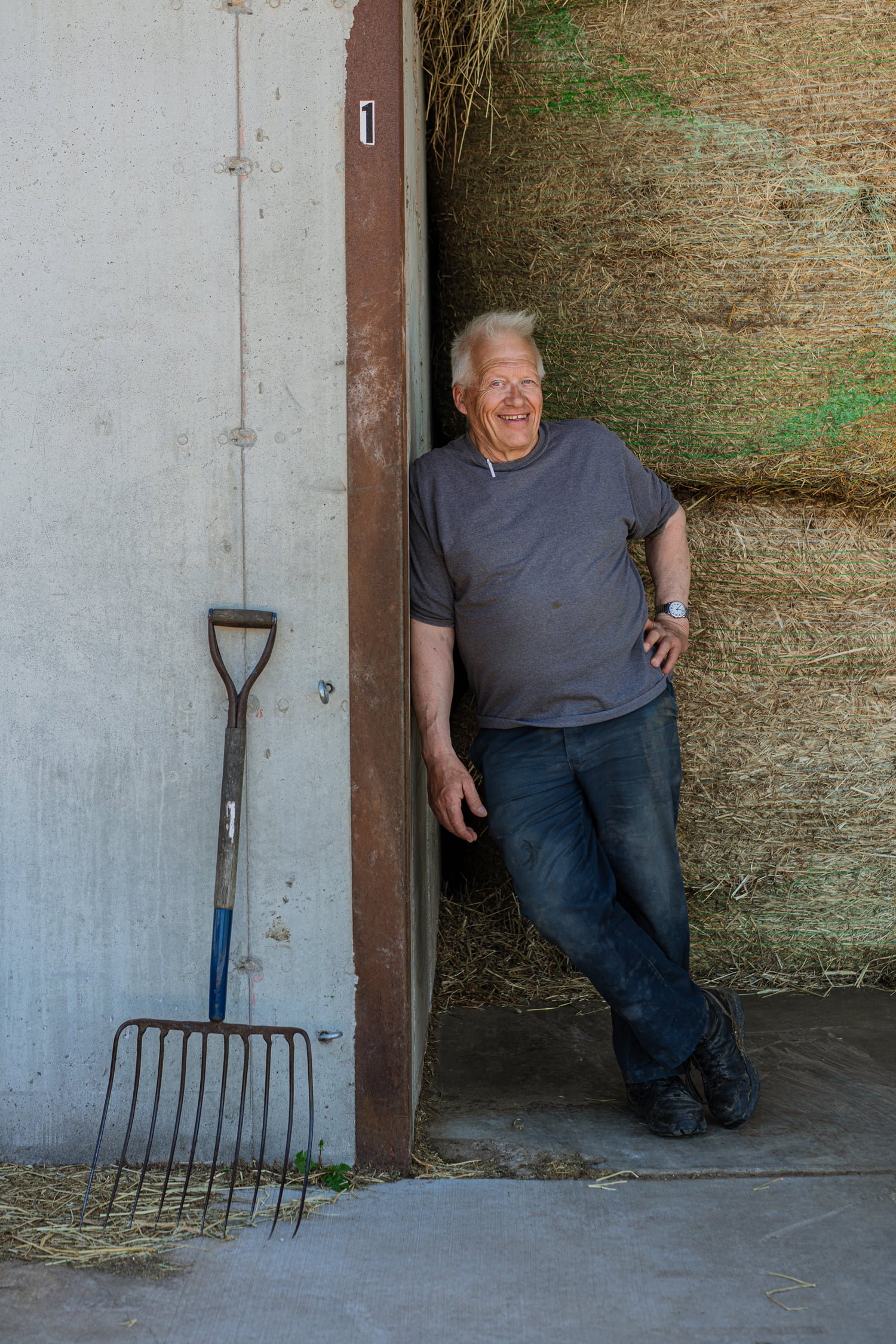
Jack Herricks stands for a portrait on his dairy farm in Cashton, Wisconsin. The farm Herricks purchased from his grandparents is cultivated with a no-till method to prevent erosion and allow rain water to soak into soil.
Even so, Herricks says, being open to others and finding common ground is essential, and that requires self-reflection. “How divisive are we? Are we willing to change? Are we willing to listen to or accept other people’s feelings? And their beliefs?” he asked. “We’ve gotta work at this.”
“You can’t be a leader if you don’t have any followers.”
Starting a ripple effect
Although views on climate change may be polarized, flooding impacts speak clearly. “Everybody can agree [on what needs to happen]”, says Micheel. “The more we can keep it local and hands on, the more successful we’ll be.”
And as a result of the work Micheel has helped both organize and inspire, Monroe County has become a reference point for neighboring counties which are now are moving forward with resiliency-focused groups of their own.
“I think the real positive out of this is, it’s not just Monroe County. We all need to take action whether it’s a community or a county or a state,” said Micheel. “So, we’re kind of casting the first stone in the water in that ripple effect.”

Become a member
We’re able to tell stories like this because of people like you. Join others from around the world in supporting Imagine5’s mission towards a sustainable future. Join today and receive our latest magazine for free.
Join now